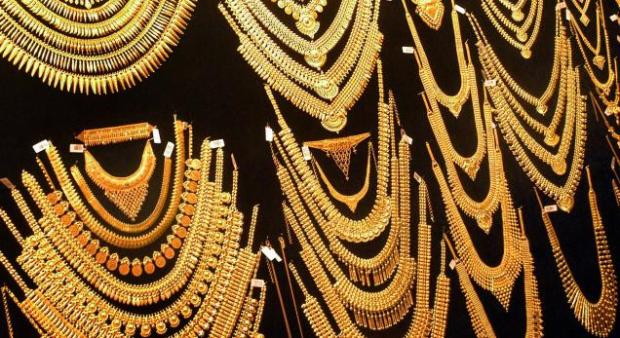We, the Indians, have a fetish for Gold. Historically and culturally, Indians love Gold. We love to buy Gold on any given occasion. May it is a birth, Engagement, Marriage, or even death, Gold is considered the most pious and pure article to give. No matter how many Silver, Pearl, Ruby, Diamond, or Platinum sets a bride may have, you will always find at least one gold set to mark as a completion of the virtue. A diamond may be a girl’s best friend, but Gold is considered a saviour of bad times for the whole family. You can always sell Gold to get cash or even get a loan against it.
India is one of the largest consumers of Gold, It’s interesting that although India consumes more gold than any other, it only has 8.7% of its reserves dedicated to it. India’s gold reserves are worth approximately $33 billion. It’s kept as a treasure and as a sailor for bad times and it just passes through one generation to another. With changing times, Gold has not lost its shine. Our young generation may be a little shy in choosing this yellow metal as a style statement, but they love to match Gold with colours like white Gold or radium, red or green Meena work, or a combination of gold with diamonds.
There are some interesting and important things, one must know before buying and selling Gold. For most of us, buying gold is a big occasion (keeping in mind the soaring prices of Gold) and thus one should be very careful in buying this glittering particle.
- Gold Purity: Most of us don’t know that the rate displayed in the goldsmiths’ shops and newspapers is 24kt. But only coins can be of 24kt. When we buy jewelry and other gold made items, it’s mixed with other particles to give it a shape and design. So the jewelry you buy can be of 22kt, 21 kt, 18kt, 14kt or even lesser than that but it is never 24kts.

- Hallmarked and KDM: These terms are mostly used by jewellers and most of us don’t understand the importance of “Hallmarked” jewelry. Don’t go for KDM jewelry as jewellers deduct too much percentage on the basis of “impure gold” when you sell it even to the same jeweller from whom you bought it from.

KDM stamp which means that the Jewelry was soldered with Cadmium. Cadmium called ‘Kadium’ in some places and marked KDM was traditionally used in soldering of gold jewelry for its good properties of liquidity and melting at lower temperatures, which is not the case any more as Cadmium is known to create toxic fumes when melted, which are very dangerous to health, over a period of time and may be harmful to humans, making the gold jewelry, some countries have banned the use of Cadmium from use, from workshops. (Source )
- Selling and buying price is different: Yes. Sad but true. When you sell gold, the price offered by jewellers is less than the buying price of gold. For example, if you bought a gold set for Rs 1,00,000 with 15% making charges, assuming that the selling price is the same, the jeweller will still deduct Rs 15000 (15% making/labour charges). So the value of your Gold (Hallmarked) is Rs 85,000. The reason, they give for this that they can’t sell the same piece to another customer. They have to melt and re-design it thus you bear the burnt.
- Cash Back: Now this is even more pinching. If you are exchange old gold ornaments for the new one, you not only have to bear the loss of labour charges but if you want to get cash in lieu of Gold, then get ready for another deduction of 2%-5% on the total amount calculated by the jeweller. For instance, if we go by the above example, On Rs 85,000, you will be charged another 2-5%, which makes the actual cash in your hands to be Rs 68-70k only. And the icing on the cake, there is no logic behind this. Jewellers say its the market ETHIC
- Investment purpose: Gold can actually be used for investment purposes. But for that, you have to buy virtual gold, not the real one. We keep hoarding the gold but never use it as an investment.
- Labor & wastage charges: Although the price of gold is the same in all jewellers of the town on any given day, you can save a few bucks in labour and wastage charges. Whenever you go to buy gold, ask the jeweller to give you the breakup of the total cost. You will be surprised by the charges they ad. Labour charges depend on the design of the ornament. More intrigue the design results in higher labour charges, sometimes even to the tune of 40% of the cost of the gold. Wastage charges are also being charged nowadays in addition to labour charges. Reasoning: While making gold, according to the design, gold is wasted. (However, the jewellers don’t handover you the “wastage”).
- Different statements at buying and selling: When you are a buyer, you are treated differently. But you are there to sell it, you are looked at with a different set of glasses.
- Different cities have different gold rates: I don’t know the reason for the same, but different cities have different gold rates on any given day. For example, the gold price in Ambala is lower than Chandigarh at the time of buying, but you get a better price in Chandigarh at the time of selling.
- The gold rate charged for stone weight: Beware of the stones and other embellishments used to decorate gold ornaments. When you buy such ornament, you pay for the stones according to the gold rate, but while selling, the jeweller will deduct the weight of the stones from gold according to his “judgment”. So ask the jeweller to segregate the weight of the gold and stones when you buy. (Although it is difficult to cross-check).
So, next time when you walk to the Goldsmith, be sure to remember these points and don’t get your wisdom washed away by the sheen of Gold.







